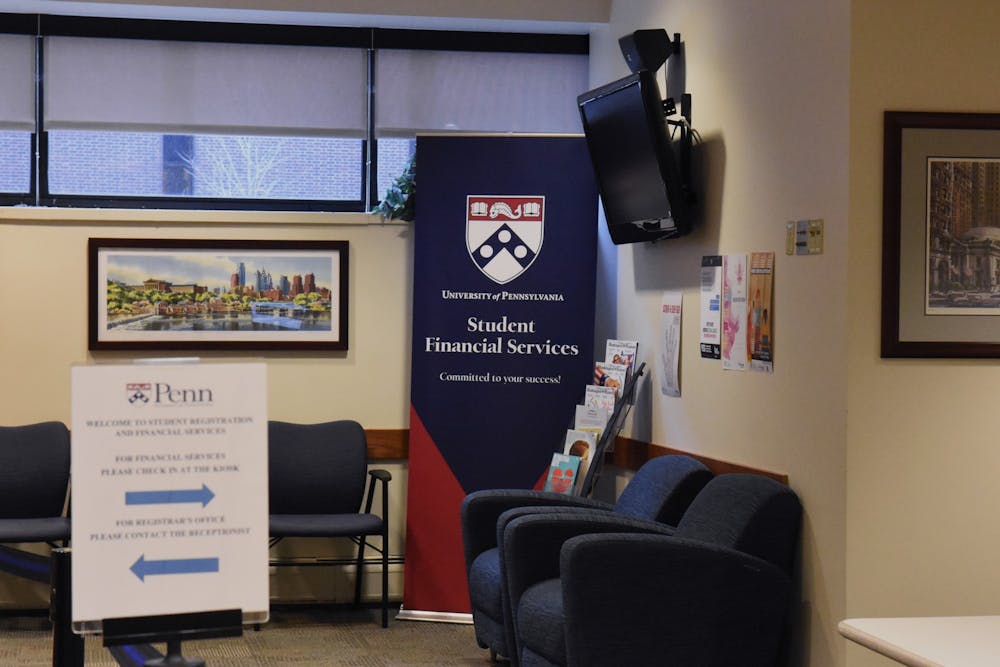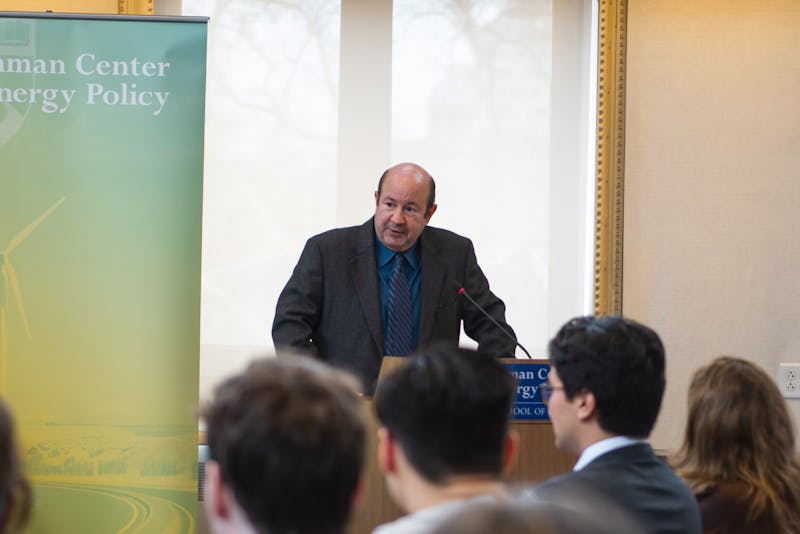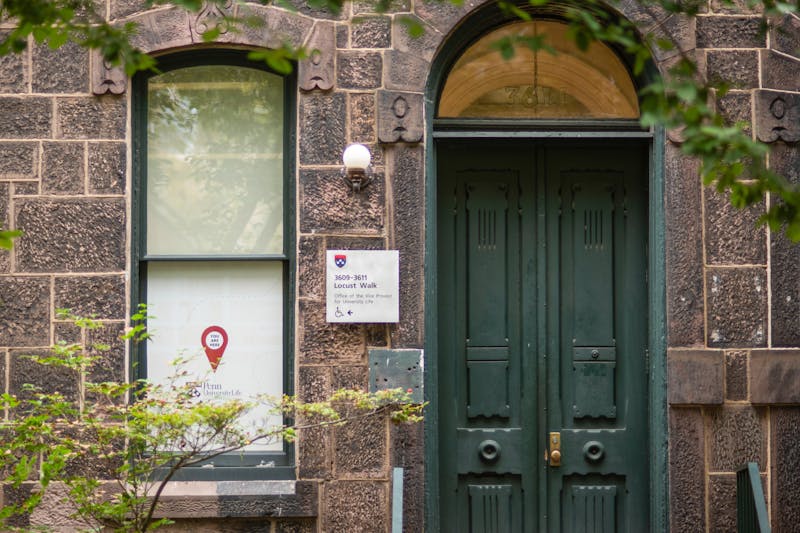
My stepdad, a ‘75 Yalie and physicist, jokes that he was admitted as a part of the University’s “geek quota.” He was a high school student whose idea of playing hooky was playing with lasers in his friend’s basement. He wasn’t wealthy or suave. He once went to a mixer at Yale wearing hip hugging, hot pink bell bottoms and seriously questioned why not a single woman would dance with him. His family broke the bank paying for him to attend an Ivy at a time when they were considered exclusively for the rich, and he is eternally grateful for it.
It’s impossible to say that after 50 years, there haven’t been any changes in how colleges admit and provide for students. More holistic admissions methods have been introduced, the financial aid provided by top universities like Penn have increased considerably, and programs have been implemented with an eye to first-generation, low-income (FGLI) and other underrepresented students.
But Penn stating that they are “need-blind” is a blatant lie. This is the main premise of the 568 Cartel Lawsuit, which accuses Penn and 15 other universities, members of the 568 Presidents Group, of violating antitrust laws by price fixing financial aid packages. In essence, universities are not normally allowed to collaborate on financial aid formulas, but a 1994 legislation gave several elite universities an exception, under the condition that their admissions be need-blind. However, this has proven to be far from the case.
“I think it is possible for ordinary people to choose to be extraordinary.” — 1997 Wharton and College graduate Elon Musk.
The University of Pennsylvania, among other top universities, likes to market its services as the quintessential college experience: Life-changing for anyone admitted, irrespective of their background. This message is so well-curated that it is easy to forget their admissions processes have upheld existing biases for centuries, rather than tearing them down.
In the early days of elite universities, admissions were vastly different from today. Before the 1920s, Harvard, Princeton, and Yale accepted anyone who completed the prerequisite classical education. There was no admissions office, as the only students who could complete these requirements had to have attended similarly elite private high schools already. In 1923, Harvard’s president, Abbott Lawrence Lowell, adopted a new admissions policy, characterized as “equal opportunity regardless of race and religion” — the direct predecessor of holistic admissions today. Admissions officers now had to consider qualities like family background and personality, but they were doing so for sinister reasons. “Increasingly alarmed” by the rising number of Jewish students earning admissions to Harvard based on academic performance, holistic admissions were developed as a proxy for ethnic quotas.
We can argue the benefits and harms of holistic admissions, but it is undeniable that they first emerged as a form of discrimination. At that time, top universities acted to preserve status and wealth, disguising their actions in language connoting generosity. We shouldn’t be surprised that this continues to happen today.
Towards the end of the 20th century, Penn’s admissions began to target minority students with high standardized test scores, who were more likely to need financial aid. This paid off, making admissions increasingly selective. In 2000, The Daily Pennsylvanian considered a 22% acceptance rate at Penn to be plummeting, in comparison to 47% in 1991. Most recently, Penn only accepted about 6% of its applicants to the Class of 2025. And so the vicious cycle continues. As Penn carries forth its message of equal opportunity, more high school students are incentivized to apply, bringing the acceptance rate farther down. Penn becomes a more prestigious name as the acceptance rate dips, further incentivizing applications.
But does Penn deserve this reputation? Probably not. From a list of 1,550 universities, Penn ranks 1,402 in its social mobility index, a measurement of real opportunity and advancement for economically disadvantaged students. Out of a survey of 1,113 randomly selected Penn undergraduates, not a single student came from a ZIP code that had a median household income in the lowest quintile. Ivies across the board have had modest gains in the number of attending low-income students over the past few decades while achieving record growth in their endowment sums. Surely the surplus money could go towards those that need it. Why doesn’t it?
“Rule number 1: Never lose money. Rule number 2: Don’t forget rule number 1.” — 1949 Wharton graduate Warren Buffet.
The generosity of Penn’s hefty financial aid packages has its limits, and we see this with the 568 Cartel lawsuit. Though Penn’s admissions does admit and provide for some of its low- and middle- income students, it only does so to a point. Many elite university admissions offices utilize enrollment management: a secretive process which uses econometric modeling to forecast the revenue and cost of making various admissions and financial-aid decisions. According to the recent lawsuit, factors such as geography, demographics, interests, and whether or not a student has requested aid are taken into consideration. Though not all of these factors are directly related to a student’s ability to pay for college, universities are using them to estimate this ability on a macro scale. Unsurprisingly, the lawsuit also lists Penn as one of the clients for Stephen Brooks, an enrollment consultant.
Penn does not only judge students’ financial needs on the macro level. Karen Crowley, a former Penn admissions officer, stated in 2009 that admissions officers admit “full-paying student[s]” on the waitlist over those that need aid, particularly when “endowments are down and cost cutting is essential.” That is, when predictions of enrollment management falter, it is real students that face the consequences. Separately, the lawsuit also mentions Penn’s tracking of past and potential donors. In her Los Angeles Times Op-Ed, a former associate dean of admissions at Penn commented on how high-priority applicants are tracked at Penn. She noted the use of tags to identify such applicants, who tend to be recruited athletes, as well as children of alumni, donors, potential donors, and students who are “connected to the well-connected.”
None of this is particularly surprising. What is surprising is that by law, Penn was not supposed to be doing any of it. Section 568 of the Improving America’s Schools Act of 1994, where the 568 Presidents Group gets its name, states that schools that employ need-blind admissions are allowed to establish common principles for assessing financial needs. In less words, a promise to offer need-blind admissions has permitted what resembles a monopoly among elite colleges. We know that monopolies harm consumers because they can raise prices indefinitely: It’s Economics 101. We also know that Ivy Plus colleges have each been hiking tuition costs by roughly the same amount every year, which seems strikingly similar to price fixing. And we know that tuition and fees have been vastly outpacing inflation in recent years. So why should we allow elite colleges to continue eliminating competition in financial aid packages, when they aren’t even need-blind?
“This has been the worst trade deal in the history of trade deals, maybe ever.” — 1968 Wharton graduate Donald J. Trump
I have been reluctant to write something so critical about Penn’s aid and admissions processes, especially when they’ve been so generous to me. See, I’m a “geek quota” type of person. People at Penn are known for being pre-professional and keeping up appearances at formals and social events galore. I am known for being a cheapskate and pulling up to class in my sweats. And yet, as a middle-class student, Penn offered me a top-tier education at a lower price than any other university that I applied to.
But words have to mean something. And right now, need-blind at Penn isn’t truly need-blind — it comes with plenty of asterisks attached. Every spot given to the children of tagged families is one not given to someone else, perhaps more deserving. Every international student considered for a spot faces need-aware admissions, leading some to not apply for financial aid at all. Every wait-listed student is similarly need-aware.
These asterisks have real impact, often on those we know. If you’re a Penn student, odds are that you are friends with someone affected by them. These inequities, coupled with the social and economic inequities already prevalent in the United States and globally, may explain why Penn has more attending students in the top 1% of household incomes than in the bottom 60%.
One could argue that these mechanisms that favor the wealthy are needed to continue earning money for Penn, but these arguments have been met with massive student backlash in the past. And with the 568 Cartel lawsuit, these mechanisms may be illegal, too. Is the money Penn earns from its tagged families worth the moral consequences? Are the lies worth the prestige?
I dare to dream of a University of Pennsylvania that is unencumbered by socioeconomic biases, where fewer students face debt and sky-high tuition costs and there is greater diversity in student background and experiences. For such a dream to be achievable, the first step is admitting that we have a problem. We must admit that Penn is not need-blind, and never has been.
CAROLINE MAGDOLEN is a College and Engineering sophomore studying environmental science and systems engineering from New York City. Her email address is magdolen@sas.upenn.edu.
The Daily Pennsylvanian is an independent, student-run newspaper. Please consider making a donation to support the coverage that shapes the University. Your generosity ensures a future of strong journalism at Penn.
Donate






